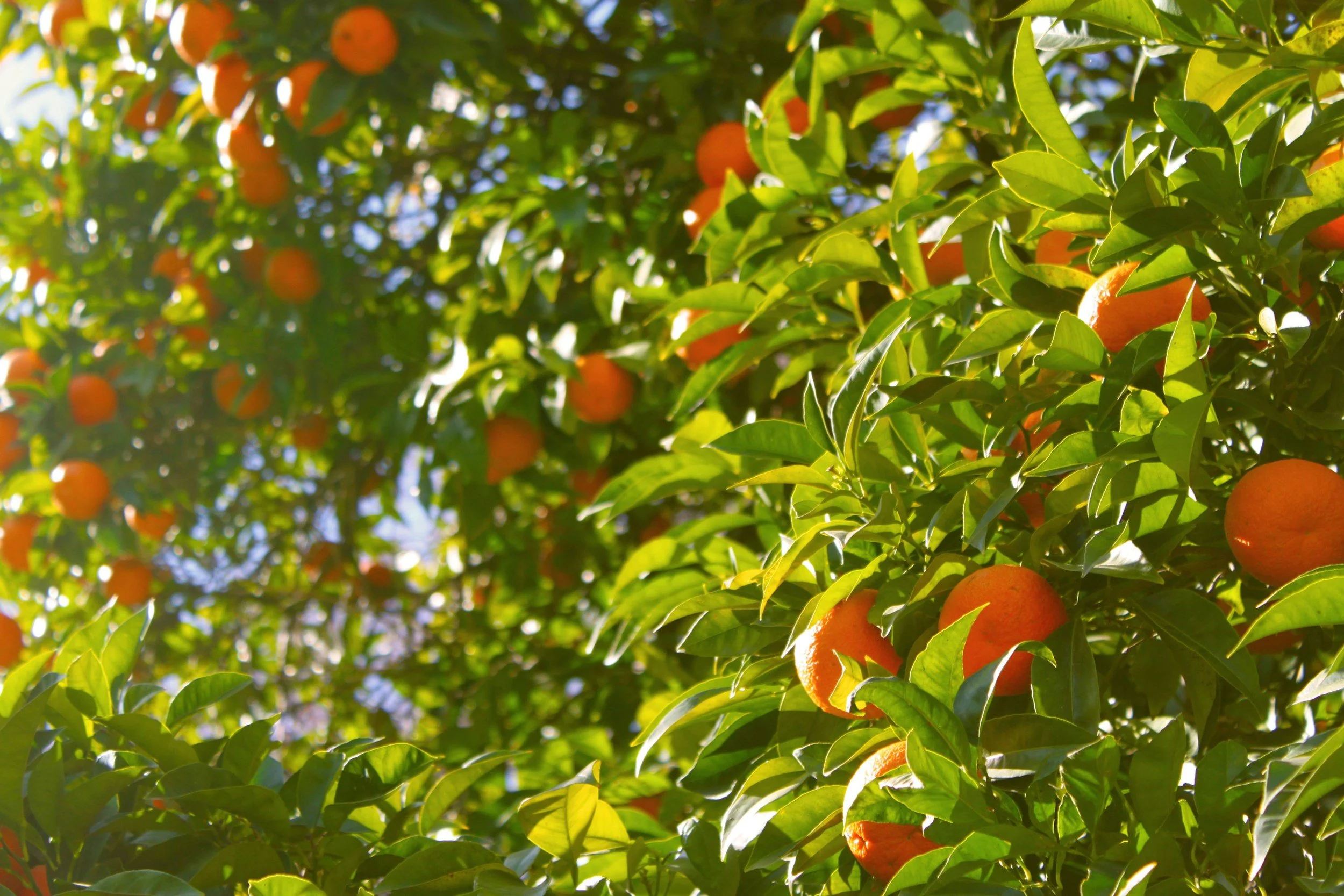Dozens of Questions: Is climate change a driver of inflated food prices? Lessons from Florida
Photograph of an orange grove, by Tyler Shaw via Unsplash.
Climate is one cause of recent food price inflation, and it is likely to drive future price increases
by MAYA CHARI | July 28, 2025
RELATED
Dozens of Questions: Gas is much more expensive in San Diego than in Houston. Does this affect commuting habits?
Dozens of Questions: Are migrating retirees contributing to rising Sun Belt housing costs?
Dozens of Questions: How are Trump’s auto parts tariffs affecting the broader economy?
Dozens of Questions: Has hospitality employment recovered from COVID-19? And will Trump's policies impact the sector?
Dozens of Questions: Why is Nevada’s unemployment rate so high?
The Marketplace Dozen: Numbers to help you understand the health of the economy (Marketplace)
Editor’s note: We recently collaborated with Marketplace to create “The Marketplace Dozen,” a dashboard of key economic indicators that provides a quick read on the health of the economy. Naturally, the data raises almost as many questions as it answers. Our Ten Across data journalism fellow, Maya Chari, who is also the chief technical architect of the Dozen, set out to answer some of them.
If you buy groceries in the United States, you may have noticed that they’ve become more expensive. Inflation, as measured by the personal consumption expenditures price index (PCE), has risen significantly in the years since the COVID-19 pandemic, and the increase has been higher for food and beverages than for other types of items.
The price of oranges, Florida’s most famous crop, has increased by 26% since 2019, roughly in line with the overall inflation rate during that period.
Experts cite various contributors to the rise in food prices, including rising labor costs and lingering supply chain issues from the pandemic. One potential culprit that may not be immediately obvious is climate change.
Florida is one of the country’s top producers of fruits and vegetables. Dairy farming is also significant, as is beef-cattle farming. Historically, the state’s warm climate has made it ideal for agriculture. But climate change has already altered Florida’s annual patterns of temperature and precipitation.
Compared to a few decades ago, Florida today has milder winters and fewer freezes. Summers come hotter and earlier, and the air doesn’t cool off as much at night. Precipitation is less frequent, though when it does rain, it tends to rain more.
All of this is affecting the state’s agricultural production. Hotter minimum nighttime temperatures stress the bodies of plants and livestock, making them smaller, less productive, and more vulnerable to disease. High atmospheric CO2 also reduces the nutritional value of crops.
Hurricanes, which have become stronger and more numerous as the ocean warms, often also do hundreds of millions of dollars’ worth of damage to the state’s agriculture, and salt water inundation from sea level rise also threatens crops. Irrigation can help crops adapt to changing precipitation patterns, but it puts further strain on the state’s water resources, which have been gradually drying up.
Florida’s citrus industry, in particular, has been hit hard by both hurricanes and by citrus greening, a bacterial disease spread by insects that attacks trees’ vascular systems. The 2024-25 growing season was the least productive in over a hundred years.
Researchers hope that studying the effects of naturally occurring climate variations like El Niño can help farmers and others make crop production and water management more resilient to larger-scale climate change.
El Niño refers to the warming phase of the El Niño Southern Oscillation (ENSO), an irregular cycle of variations in wind and sea surface temperatures over the tropical Pacific Ocean. The El Niño phase of the cycle is characterized by warmer ocean temperatures and weaker Pacific trade winds. There’s some evidence that climate change is making El Nino events stronger and more frequent.
David Letson, a professor of environmental science and policy at the University of Miami, has studied ENSO’s effects on Florida agriculture for the past twenty-five years. According to Letson, systems that connect farms and supermarkets are so complex that it's hard to trace the impact of specific weather events to food prices.
What’s more clear-cut is the financial impact climate change is having on the insurance carried by Florida farmers. Farmers, like homeowners, typically have property insurance. They may also insure the crops themselves. It’s more common to insure row crops, like corn, wheat, and soybeans, which are found more often in Northern Florida, than the specialty crops like fruits and vegetables grown in South Florida.
Both property and crop insurance have increased in price as natural disasters become more frequent. The frequency of natural disasters have increased as temperatures have risen in the climate.
Letson says it’s easy to see how increased insurance costs could lead to increased food prices or even to farmers selling their land or retiring. Younger people may choose not to become farmers as the financial realities become less forgiving. The average age of farmers in Florida is almost 60.
Increasingly, farmers are using predictive modeling to make decisions to ensure that their farms remain profitable.
“What people don’t appreciate is how sophisticated modern farming is. These guys are engineers that use a lot of technology,” said Letson.
But to do so, they need access to accurate and specific data, including climate and meteorological data. That access is now under threat.
“It’s disheartening to see cuts to the National Weather Service. The effects on the economy are coming. We need the data that that agency provides. We’re being penny-wise and dollar-foolish. We’re going to pay for that sooner or later.”
The author would like to thank Young Gu Her of the University of Florida for valuable background information that informed this article.

